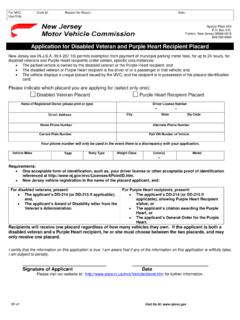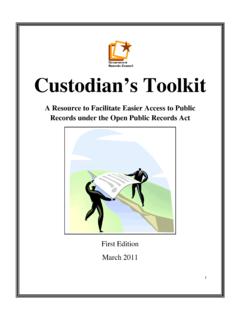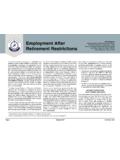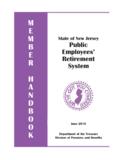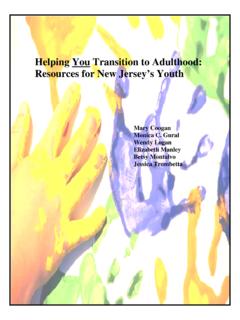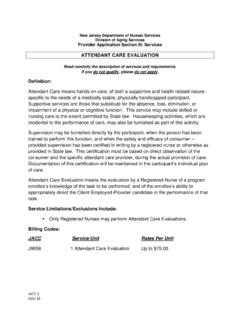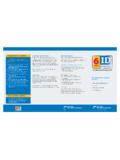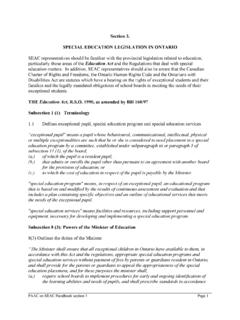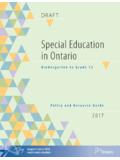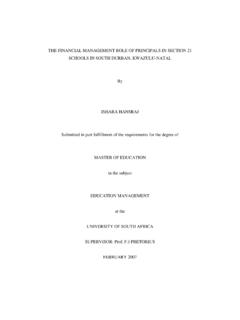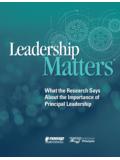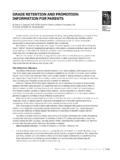Transcription of Autism Program Quality Indicators - New Jersey
1 A self-review and Quality improvement guide for programs serving young students with Autism spectrum disordersNew Jersey Department of EducationAUTISM Program Quality INDICATORSAUTISM Program Quality Indicators Autism Program Quality Indicators A self-review and Quality improvement guide for programs serving young students with Autism spectrum disorders William L. Librera, Commissioner Isaac Bryant Assistant Commissioner Barbara Gantwerk, Director Office of special education programs Barbara Tkach Office of special education programs Fall, 2004 New Jersey Department of education Office of special education programs Box 500 Trenton, NJ 08625 PTM STATE BOARD OF education ARNOLD G. HYNDMAN ..Belvidere President DEBRA Vice President MARGARET F.
2 Beach RONALD K. BUTCHER ..Pitman MAUD DAHME ..Flemington KATHLEEN A. ANNE S. DILLMAN ..Perth Amboy JOSEPHINE E. JOHN A. GRIFFITH ..Montclair THELMA NAPOLEON-SMITH ..Trenton SAMUEL J. PODIETZ ..Lumberton EDWARD M. ROBERTA VAN William L. Librera, , Commissioner Secretary, State Board of education Table of Contents v Program 1 Program Effective Instructional Family Involvement and Community Program Student Individual Student Developing an Individualized education Program (IEP)..10 Challenging Program Individual Progress and Appendix A -Summary Documents (Applied Behavior Analysis and Developmental Individual Difference Relationship-based Model) Appendix B -Unsupported Treatments and Services Appendix C -Web Resources Appendix D -Eligibility Category Appendix E -Transition Summary Forms iii AcknowledgmentsThe New Jersey Department of education would like to acknowledge the work of theUniversity of the State of New York, the New York State education Department, and the Office ofVocational and Educational Services for Individuals with Disabilities in the development of thisdocument.
3 The New York Autism Program Quality Indicators , a document produced by the New YorkState education Department, was used as a model for the New Jersey Autism Program Quality sections of the NewYork State Autism Program Quality Indicators were placed directly into theNew Jersey version. The New York document is available online at: New Jersey Department of education , Office of special education also gatheredinput from professionals in the field of Autism and would like to express its appreciation to the follow-ing individuals who provided their input and review. special appreciation is extended to the authors ofthe New York State Autism Program Quality Indicators :Daniel B. Crimmins, Mark Durand, Theurer-Kaufman, Everett, New Jersey Department of education would also like to acknowledge the follow-ing individuals who provided input and review in the development of the New York State Autism Pro-gram Quality Indicators :Edward G.
4 Carr, Cohen, DarcyAnne F. Farrell, J. GearyJoanee Gerenser, Pat HartnettEdna KleinmanRussell Kormann, PonzioPhilip Smith, Smith, Towle, WolffivAcknowledgments The preparation of this guide represents an effort by the New Jersey Department of education , Office of special education programs , to gather input from professionals in the field of Autism . The New Jersey Department of education offers its appreciation to the following individuals who provided their input and review. Dr. Patricia Berezny Bayonne School District Dr. Suzanne Buchanan COSAC Ms. Mariann Chletsos NJ Principals and Supervisors Association Ms. Irene Cook Pompton Lakes School District Dr.
5 Gerard Costa Institute for Training in Infant and Preschool Mental Health Ms. Marion Crino Bright Beginnings Learning Center Dr. Caroline Eggerding State special education Advisory Council and Voorhees Pediatric Health System Dr. Susan Evans Early Intervention, Department of Health & Senior Services Mr. Edward Fenske Princeton Child Development Institute Ms. Bobbi Gallagher Parent, Ocean County Ms. Judith Geddis New Jersey Principals & Supervisors Association Dr. Sandra Harris Committee on Educational Interventions for Children with Autism , Graduate School on Applied and Professional Psychology, Rutgers University Dr. Jan Handleman Douglas Developmental Disabilities Center, Rutgers University, The State University of New Jersey Dr.
6 Jay Kuder Rowan University Ms. Carol Markowitz Eden Services Dr. James Mc Laughlin New Jersey Association for Pupil Services Administrators Ms. Vicki Molokie Parent, Monmouth County Cathy A. Moncrief NJ School Board Association Dr. Janet Parmelee NJ Association for Pupil Services Administrators Mr. Paul Potito COSAC Ms.
7 Cheryl Santos Parent. Somerset County Ms. Bonni Rubin-Sugarman Haddonfield School District Ms. Katherine Solana Association of Schools & Agencies for the Handicapped Dr. Erik Solberg Academy Learning Center Ms. Toni Spiotta State Interagency Coordinating Council and Demonstration Project at Montclair State University Ms. Liz Vaughan Office of Early Childhood, DOE Dr. Linda Weber Allendale School District Dr. Wendi Webster-O'Dell PTA / Parent, Mercer County Dr. Walter Zahorodny UMDNJ-New Jersey Medical School v Introduction New Jersey is well known for its long history of outstanding programs serving students on the Autism spectrum.
8 This reputation is a direct result of landmark laws and regulations in the 1970s that established aggressive practices to identify children with learning disabilities and to provide programs that respond to their needs. Since then, the New Jersey Department of education has maintained a strong commitment to educating all students with Autism . This commitment recognizes that education is the primary intervention for young children with autistic spectrum disorders. When these disorders are present early in a young child s development, they interfere with basic human accomplishment. Developmental impact is evident early in a young child s communication skills and social skills. Effective interventions for students with autistic spectrum disorders emphasize the need for their educational experience to include not only knowledge and skill acquisition, but also an emphasis on socialization, language and communication, the reduction of problem behaviors, and adaptive skills.
9 High- Quality programs for students with Autism share common characteristics, or Indicators , which in practice set standards that, can serve as best practices. This document, the New Jersey Autism Program Quality Indicators (APQI), was developed to identify research-based Indicators found in successful programs . This document is the direct result of a panel of nearly three dozen Autism experts in New Jersey from the fields of education , medicine and psychology. The panel reviewed research findings and best practice models with a major emphasis on the conclusions and recommendations of the National Research Council and on documents from other states, especially the Autism Program Quality Indicators produced by the New York State education Department.
10 Educators and parents can use this document as a guide that describes effective models of educating students with Autism spectrum disorder (ASD), including: Autistic Disorder; Asperger s Disorder; Pervasive Developmental Disorder; Not Otherwise Specified (PDDNOS); Rett Disorder and Childhood Disintegrative Disorder. The APQI can serve as a tool for parents and professionals engaged in Program evaluation. Although the guidelines described have not been linked specifically to successful outcomes, they do represent best practices from clinical experience and research findings. It is important to note that these guidelines will be most helpful in responding to needs of young children with Autism , between the ages of three and eight. In addition, school districts can use the APQI in their self-review of programs and their Quality improvement efforts.
